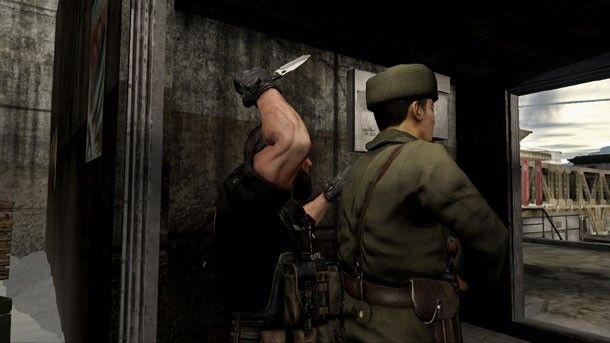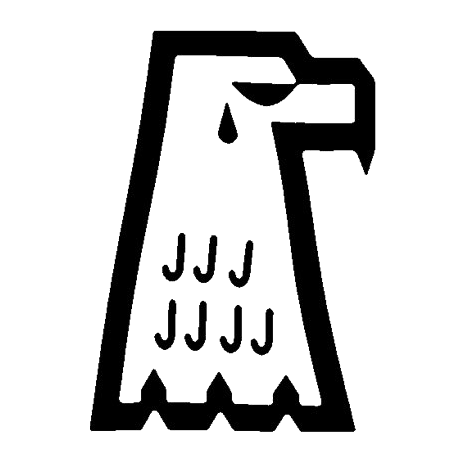Teamwork
Matthew Cole's new book Code Over Country reveals what the War on Terror awoke within SEAL Team 6



Edited by Sam Thielman
READ DAVID PHILLIPS' book Alpha and you can get the impression that Eddie Gallagher is terrible at being a Navy SEAL.
Alpha, which is sourced very deeply among the SEAL Team 7 platoon that Chief Gallagher led, presents Gallagher as a psychotic coward. His platoonmates cringe when Gallagher yells "got 'em!" from behind a rifle when shooting at no one in particular. They wonder what they've gotten themselves into when a story circulates that Gallagher, at the time an instructor at the SEALs' Basic Underwater Demolition/SEAL (BUD/S) training gauntlet, shot through a little girl to kill the Taliban target holding her. During the Battle of Mosul, Gallagher contravenes orders, turns off his blue force trackers and maneuvers a squad of SEALs to a position he has incorrectly scouted, where he gets another SEAL, known as Dragon, shot.
Most infamously, on May 3, 2017 in Mosul, Iraqi commandos captured a badly wounded 17-year old ISIS fighter named Moataz Mohamed Abdullah. Abdullah was barely responsive and, even if he was lucid, as a prisoner he was no threat to the Iraqis or their American allies. Gallagher drew a knife and stabbed Abdullah to death in front of his platoonmates, several of whom understood they were witnessing a murder. Lt. Jake Portier, a SEAL officer whose duty in that moment was to take his chief into custody, told the squad to assemble for a souvenir pic with the dead teenager. Later, Phillips writes, Gallagher and Portier "went on as if something had happened—something awesome. Eddie went around carrying the murder weapon on his belt."
Gallagher did this, according to Phillips, because he wanted what in an earlier age we would call glory. The War on Terror, which goes on endlessly and grants special operators like the SEAL Teams endless opportunities to kill behind a veil of secrecy, was a conflict practically purpose-built to provide him with what he wanted. Everything that happened after Gallagher slew Abdullah was a political conflict over whether Gallagher's works were glorious.
You're reading a free post by Spencer Ackerman on FOREVER WARS, an independent outlet devoted to covering crimes of the state.
READ MATTHEW COLE'S forthcoming book Code Over Country: The Tragedy and Corruption of SEAL Team 6, and you'll see Gallagher on practically every page, waiting to kill a child soldier. (Moataz Mohamed Abdullah became radicalized by ISIS because ISIS would hang out on the soccer fields of Mosul and act like big brothers to impressionable and surely war-traumatized teenage boys.) You'll also see Portier right behind him, ready to cover it up.
I don't mean to suggest that Alpha, a courageous and deservedly praised book, is soft on the SEALs. Alpha appropriately presents Gallagher as an extremis case and then zooms out to show an institutional culture of covering up crimes committed in the course of warfighting.
Code Over Country's focus is the opposite. Cole looks at the origins of SEAL Team 6—I remain confused about whether Gallagher was ever actually in Team 6—and its development through the crucible of the War on Terror. Gallagher gets a chapter in Cole's book, but he's arguably not the most shocking case Cole explores, only the highest-profile. The story Cole tells is about all the institutional failures necessary to produce someone like Gallagher.
Cole's touchstone is "Demo Dick" Marcinko, a criminal, a liar, and a sociopath who created SEAL Team 6 in his image. Demo Dick recently passed away, and his story alone is worth the price of Cole's book. In the wake of the failed 1980 spec-ops mission to rescue American hostages in Iran, Marcinko pitched Team 6 as a counterterrorism force that could both kill people up close and engineer its way out of any obstacle it encountered.
It was also a way for Marcinko to cope with his Vietnam experience. Enlisted men suffered and died because ignorant officers placed them inside a crucible. Team 6 would be a place where the superior warrior led, even if command belonged to the inferior warrior with rank bars on his shoulders. Marcinko decided who was the superior warrior by determining who was able to stay as drunk as he was, and who would protect their tribe from the Navy. Selection for 6 from within the Teams depended not on peak-performance physical endurance—that's what BUD/S is for—but loyalty to Marcinko. That loyalty could be a one way street. Marcinko once blamed his driver when his tricked-out Mercedes rear-ended another car after a bar crawl. "I set it up like a mafioso, a band, a brotherhood," he reminisced to Cole.
In a history of Naval Special Warfare that Cole quotes, an unnamed SEAL reflected on Team 6:
[I]n that group of 150 or 200 men, who are so highly trained, all keyed up and required to do such hazardous things, you are going to find some amoral people. They're there because they're smart and aggressive, and they have no morals. …
But the great majority are really dedicated, straight, hard-working people. The reason the amoral man doesn't get away with more is that a lot of people watch him. He is controlled. But you are going to find that kind of person when you have a group of people required to perform what these people are required to perform.
Marcinko's system ate away at the safeguard of "a lot of people watch[ing]" an "amoral man" within their ranks. His code truly was a mafioso's: Say and do nothing that will expose the Brotherhood to reprisal from the Navy. Marcinko held the Navy in contempt. One of his favorite epithets, "cockbreath," tended to mean anyone in the Navy who wasn't Teams, and then anyone in Teams who wasn't Team 6. His SEALs took on that ethos. They deemphasized rank in favor of experience, but in the process eroded the good order and discipline necessary to prevent a military outfit from devolving into a hit squad. The officers of Team 6 feared their operators. Many of the enlisteds didn't respect their officers. Soon enough, rule-breaking distinguished a Good Dude (a member of Teams who put Teams first) from a Turd (anyone else).
That dynamic played out on a grand scale with Big Navy. Marcinko eventually had to be removed from Team 6, but he wasn't substantially disciplined, let alone court martialed. A three-star admiral named James "Ace" Lyons protected Demo Dick and allowed him to lead a classified unit known as Red Cell, whose story is so insane and inappropriate I won't spoil it. Having learned from the Navy that its rules would not apply to him, Marcinko's corruption grew so extreme—he conspired with a contractor to sell Team 6 a supposedly experimental grenade at an inflated price that the company kicked back to him—that eventually he came under indictment. It turned out that a frankly fearful Navy would overlook a tremendous amount of how exactly its elite counterterrorism force operated until it had a scandal on its hands that it could neither ignore nor explain. "I was scared shitless," recalled a Navy investigator. "We were told going in, 'SEALs circle the wagons and don't rat each other out.'"
Like a good criminal, Marcinko was also a branding pioneer. To pay off his quarter-million legal debts, he got a book contract for what turned out to be a massive hit memoir, Rogue Warrior. The 1992 book, Cole writes, made Team 6 "now a part of American public consciousness," something that "served as the recruiting tool for an entire generation of SEALs, who would go on to fight the Forever Wars in Iraq and Afghanistan after 9/11."1 Foreshadowing bullshit-packed SEAL memoirs of the War on Terror like American Sniper, The Operator, and No Easy Day, the book was full of lies, including a shocking story slandering a Navy SEAL captain for abandoning Marcinko under fire in Vietnam. The ambush Marcinko wrote about never happened and his men simply killed two fishermen hapless enough to drift into a bend in the Mekong Delta that the American military had declared a free-fire zone. It was easy enough to lie about it.
THEN CAME THE WAR ON TERROR.
One of the main characters of Code Over Country, like Alpha before it, is the public adulation of the Navy SEALs and especially Team 6. Code Over Country lingers on how deliberate and cultivated the propaganda is. Cole reports an astonishing story of a SEAL officer threatening to cut off the contract of a close-quarters-fighting instructor who balked at marketing a SEAL-branded video instruction series. "It's not the product, Duane, it's the brand," Cole quotes Timothy Szymanski saying. Szymanski recently retired as a vice admiral and head of all of Navy Special Warfare.
The War on Terror was great for the brand. Chris Kyle made up a lot of things in American Sniper, but the reason that book sold two million copies and got made into a movie starring Bradley Cooper is the same reason that Disney paid $4 billion for Marvel Comics. Kyle was selling a story about the wrathful vengeance of a superhero. Kyle understood that the public didn't need to see him as a good man, it needed to see him as a righteous man. That righteousness would make the public forgive his flaws as easily as it does Iron Man's. Kyle expressed it through what Cole calls "more religious overtones." That is, Kyle called the people he shot Savages, and his audience would understand what he meant. "Christianity had evolved from the Middle Ages. We don't kill people because they're a different religion." That's an actual line in American Sniper! "I only wish I had killed more. Not for bragging rights, but because I believe the world is a better place without savages out there taking American lives." American Sniper, in other words, was Jesus' Sniper.
The SEALs were the War on Terror's instrument of righteous vengeance. With the SEALs, there were no complexities of constructing a post-Taliban Afghanistan or a post-Saddam Iraq. They killed people and moved on to kill the next person, up to, including and beyond Osama bin Laden. Whatever happened in Abbottabad afterward was someone else's problem. Two SEALs on the bin Laden raid, Matthew Bissonnette and Robert O'Neill, competed to promote memoirs that both stole valor from the actual man who killed bin Laden, who is known only as Red and will supposedly never talk. The Navy has gotten agitated over the rise of the so-called Unquiet Professional within the SEALs, but the service has to confront that it fed the War on Terror a steady diet of Hollywood SEAL content.
From both Cole and Phillips' books, The War on Terror's limitless violence and fear appear to have snapped important bonds of decency within SEAL Team 6, which makes more and more sense the more you think about it. Cole begins with the Team's 2002 entry into Afghanistan, a calamity that saw Team 6's Britt Slabinski leave behind a grievously wounded Air Force operator, John "Chappy" Chapman, on a 10,200-foot mountain. Drone footage later revealed that Chapman fought al-Qaeda gunmen for an hour before finally dying. The horror at what became known as Roberts Ridge—more on that in a second—kicks off an intensifying cycle of Team 6 lying and covering up its operations, all the way up to Slabinski's 2018 Medal of Honor, a story Cole tells masterfully. ("By giving Slab the award, you close the door on our criminal history," a veteran of Team 6 tells Cole. "The cover-up wins.") With so much of the War on Terror entrusted to the Teams, and particularly to Team 6, this time, the Navy imposed even less accountability on the SEALs than in Marcinko's time.
Among the things they covered up was what Cole portrays as the lasting lesson of Roberts Ridge. It is so named for the battle that took place on March 4, 2002, in Takur Ghar in eastern Afghanistan. There, a SEAL named Neil Roberts fell from the open ramp of a Chinook, was shot by al-Qaeda forces and then mutilated by them. In the name of avenging Roberts, Cole reports, the SEALs and particularly the color-coded squadrons of Team 6, went on a campaign of corpse mutilation. One technique they used became known as canoeing. Canoeing refers to the shape of the wound left by a 5.56 mm round fired into the upper forehead at extremely close range. The SEALs were literally shooting corpses. Soon it wasn't about Roberts anymore.
They had other techniques as well. The SEALs of Red Squadron—"a third of them literally think they're Apache warriors," a SEAL leader told Cole—carried specialty-made hatchets "and began to use them to mutilate dead fighters in Iraq and Afghanistan," Cole writes. "Others used them to kill militants in hand-to-hand combat. A template for battlefield misconduct had been established. The enlisted and junior officers were to keep any criminal activity from reaching the squadron commander or the two captains running the unit." Through it all, the SEALs upsized, lowering standards to grow rapidly enough to cycle through an intense period of deployment that has lasted 20 years.
Once in the brotherhood, it could be hazardous to object to what the brothers did. Phillips writes of the Alpha SEALs horrified by Gallagher murdering Abdullah:
A lot of the guys in the platoon were afraid of Eddie. He was a chief with hundreds of connections in the Teams. He had a huge influence over their futures.
The fact remains that there were SEALs in Alpha who reported Gallagher. While it shouldn't be noteworthy when people sanctioned by the state to kill its enemies follow its laws, Phillips and Cole's books show that there is moral and ethical rot within the SEAL Teams, and it is very deeply rooted. That means it is noteworthy that there are SEALs who really and truly signed up to do hero shit and stayed true when they discovered they would be made to do villain shit.
Many years before anyone ever heard of Eddie Gallagher, the SEAL admiral who ran the U.S. military's Special Operations Command began speaking cryptically about the spec-ops community "fraying around the edges" under the stress of relentless deployment. The church of secrecy around all things spec-ops ensured that while I could cover Admiral Olson's comments, the reality of what it means for such a community to fray around the edges remained concealed. That was 2011, half a Forever War ago, and now we know. The deployments may slow but they do not stop.
YOU'LL NOTICE WE DIDN'T mention Reality Winner. I don't know the full story about what happened there, and so I'm going to wait until I do before I venture forth into anything like judgment. Cole wrote a thorough and frankly brave book. I want to focus on that.
FUN PODCAST TIME. If you have a background in hardcore, you'll understand why it's wild that I was on Dan O'Mahony's podcast. I did nothing in punk rock that made any lasting impact!
OK, WATCH THIS 9-minute video. So you think a civil war will go nuclear and your plan is to sell DIY QRF training? Anyway, this guy was recently charged with "teaching another individual how to make and use an explosive, knowing the individual intended to use that instruction in the attempted murder of federal law enforcement personnel." Around 7:06 you can hear this David Cross character talk about how his training is too dangerous to give away for free, as "you absolutely can [wipe out a police force] with that information."
ON FEBRUARY 11, I’ll be on a virtual panel discussing the War on Terror sponsored by the High Line, which I guess sponsors such things; I figured it would be civic to accept the invitation. That's at 2:30 pm ET. Then on February 17, I'll be speaking to the Massachusetts Institute of Technology. Not in person—which sucks, I wanted to go to Luke's emo night—but if you want to hear me talk in a highly respectable forum about REIGN OF TERROR, you can join in at 4:30 pm ET.

